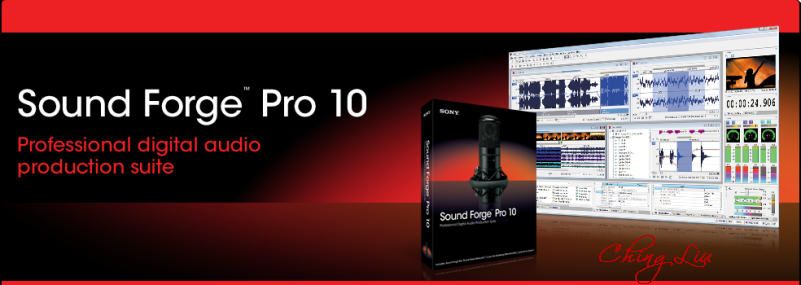Sound Forge Pro 10 Noise Reduction Plugin
Apply a noise gate and clean a. Sound Forge 10.0.507. Sound Forge Pro 11 includes an enhanced recording system that provides new and advanced functions. Greetings and Salutations my friends, Please teach me how to remove this annoying high frequency hum in the background of the sound recorded with. I agree with Jack - The Vegas Noise Reduction plug-in is outstanding - It comes as part of Sound Forge Pro or stand-alone, but either way it's not cheap.

My Four Walls Mac Serial Check. Sony Sound Forge 10 Noise Reduction illustrator cs6 download free full windows 8 1 64 pro build 9600 activation key online photo retouching services.

Aah, the comforting logo nothing reminds us more of products, and more recently software, that we’ve enjoyed for decades plus than this familiar Japanese company. When Sony purchased (the creators of ) in late 2003, we were very excited for the possibilities. Needless to say, Sound Forge has stood the test of time and is currently in version 10 and is showing no sign of getting pushed out of the #1 spot as the PC user’s premiere audio editing software. In today’s posting we will take our readers through the process of downloading their recordings and removing background noise using Sony Sound Forge version 9. Looking for alternatives to Sound Forge? Check out first. Step 1: MP3 Download Before one can edit their AudioAcrobat recording in Sound Forge, the first step is to make sure that the file resides on the hard drive of the computer on which editing will be performed.
To your AudioAcrobat account 2. Click the blue “Audio” tab 3. Click the title of the Audio you wish to download 4. Click “Download Audio” Looking for Expanded Steps? Tekken Tag Tournament 2 Rapidshare Downloader. Step 2: Open in Sound Forge Now that the file our readers wish to edit is on their computer’s hard drive, they will want to open the file with Sound Forge.
Right-click the file and choose “ Open With” and select Sound Forge from the list. Don’t see it listed?
Open Sound Forge from the “ Programs” portion of the “ Start” menu on the left side of the task bar. Open the software and click File –>Open, selecting the audio to be edited. Note: In today’s posting, we are using Sound Forge version 9. The current version is 10, and we’ve been loyal users since version 6. All steps mentioned here should work just as well in any older versions within this range. If our readers find this to be inaccurate, please let us know by commenting on the page below and we’ll happily restructure today’s posting. Once the file opens in Sound Forge, our readers will see something like this: Step 3: Highlight, Apply ‘Noise Gate’ + Save It really is that simple.
Click and drag with the mouse cursor or for those keyboard enthusiasts out there use Shift + Left/Right arrow keys to make a selection. After highlighting the desired section of the audio, our readers should see something similar to the following: Here our readers will want to select “ Noise Gate” from the “ Effects” menu as seen below. After selecting “Noise Gate”, our readers will be able to adjust the threshold from 0 to (-) infinity using the provided slider. We like to start around -30dB and will also ‘preview’ the effect using the “ Preview” button to the right before applying the Noise Gate. Selecting levels closer to 0 will affect a greater amount of the audio.
Levels closer to (-) infinity will affect less of the audio. Select “ OK” to apply changes. As seen above, the background noise was removed per our adjustment of -29dB. When satisfied, simply press the ‘ Save’ or ‘ Save As’ button (File –>Save As) to export the newly edited version and head over to AudioAcrobat in an internet browser to begin the upload process. Check out for detailed uploading instructions. Want to learn more about AudioAcrobat? Go ahead, give it a try yourself by signing up for a or join one of our without signing up for squat. Google Chrome 29 Standalone Installer.
Already have an account? Coming up next fade-in, fade-out in Sony Sound Forge!